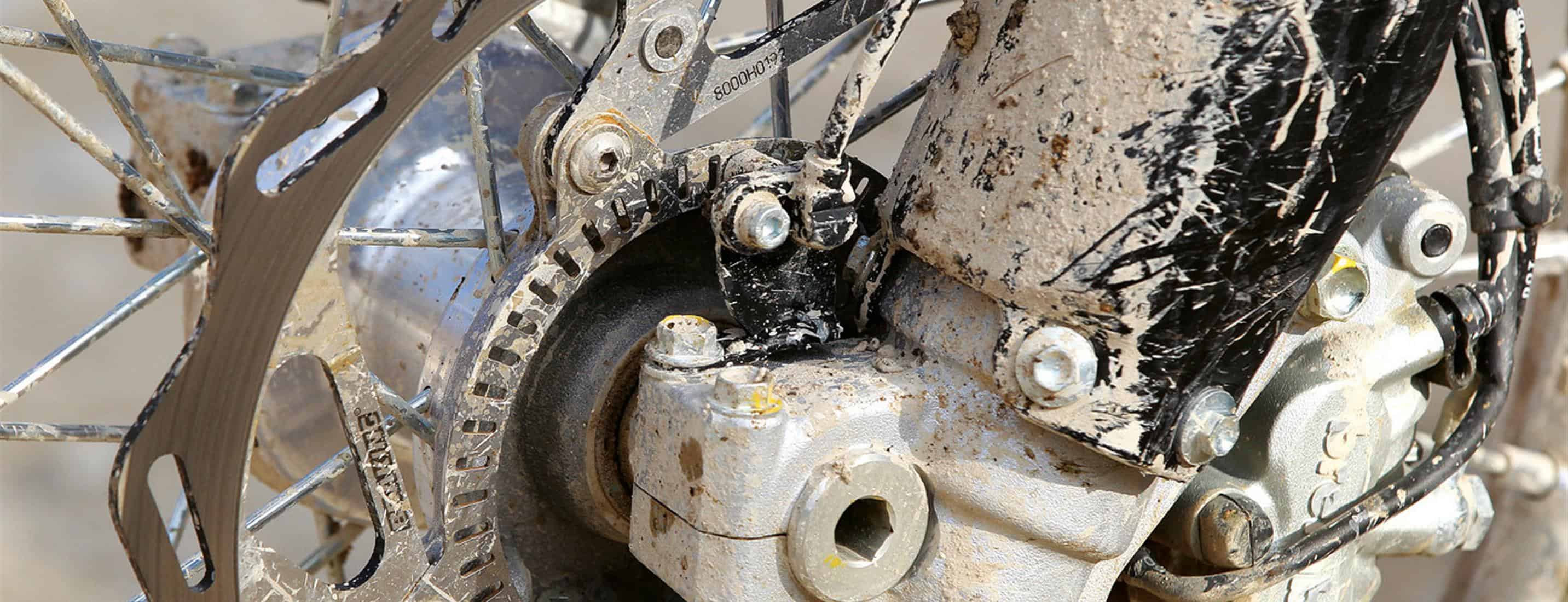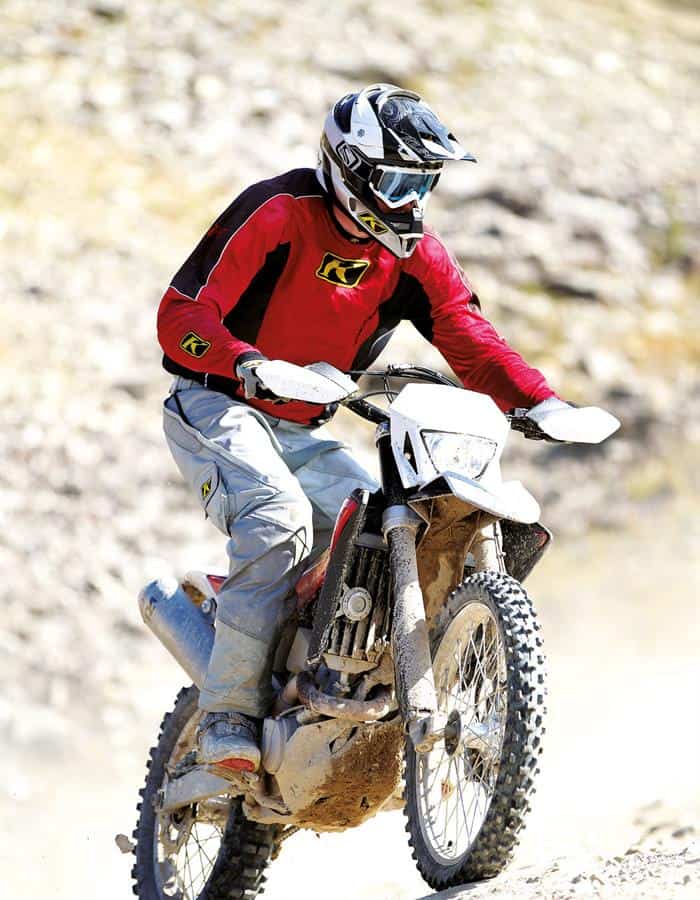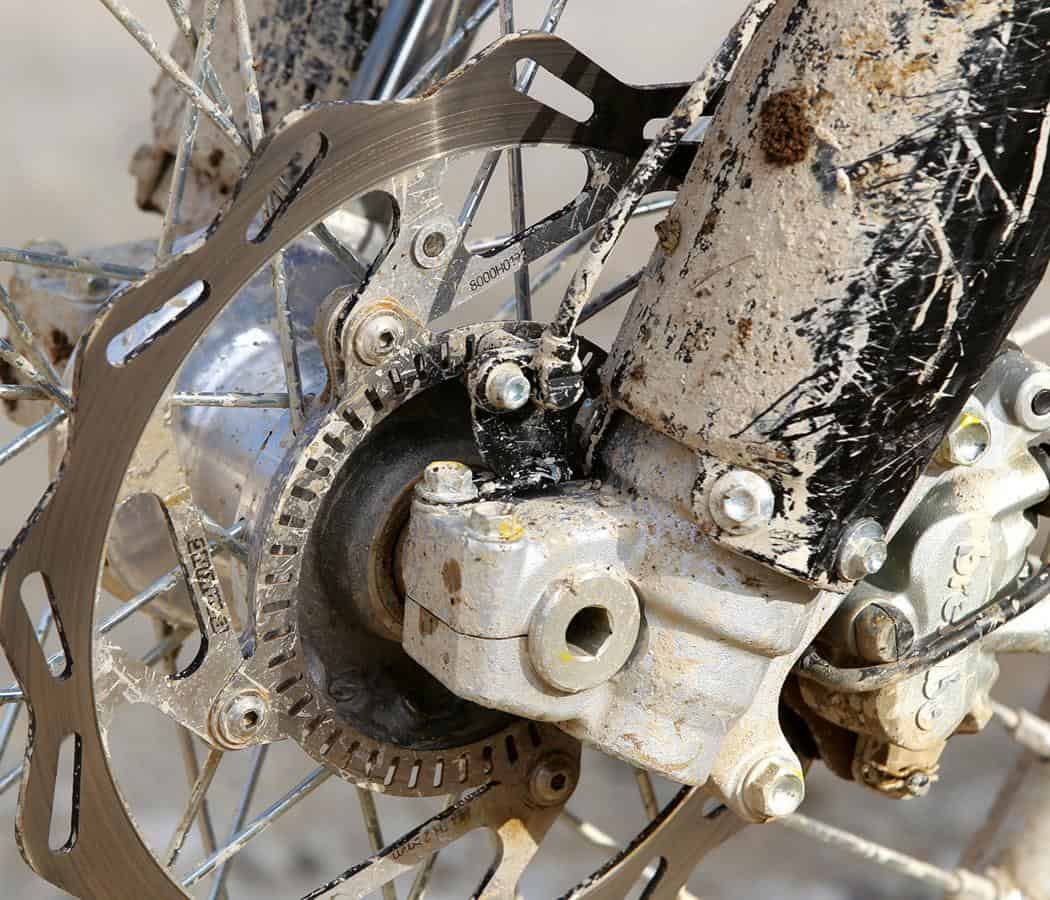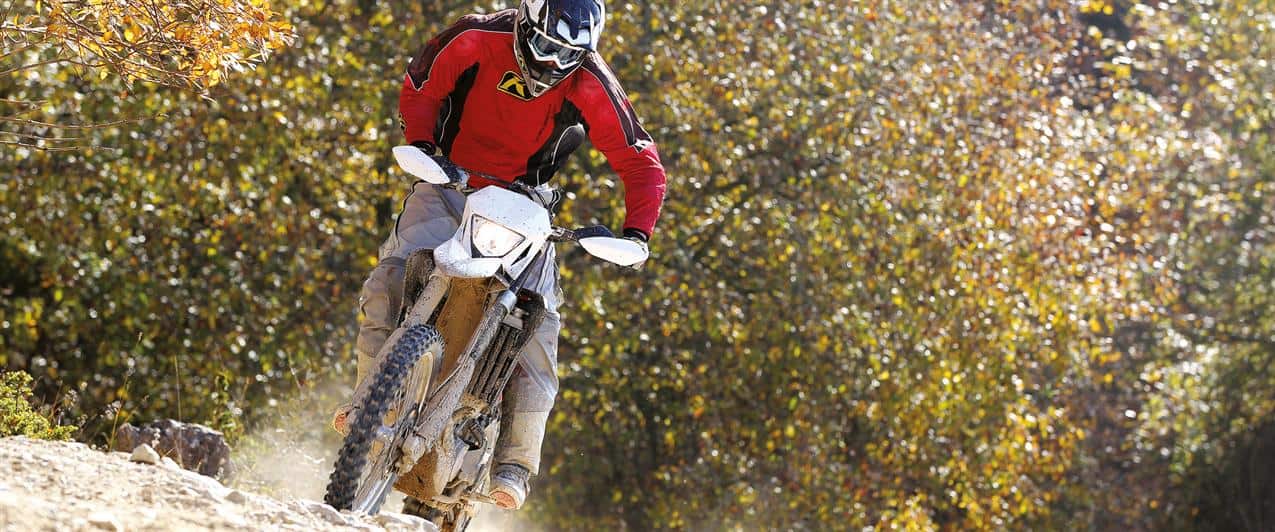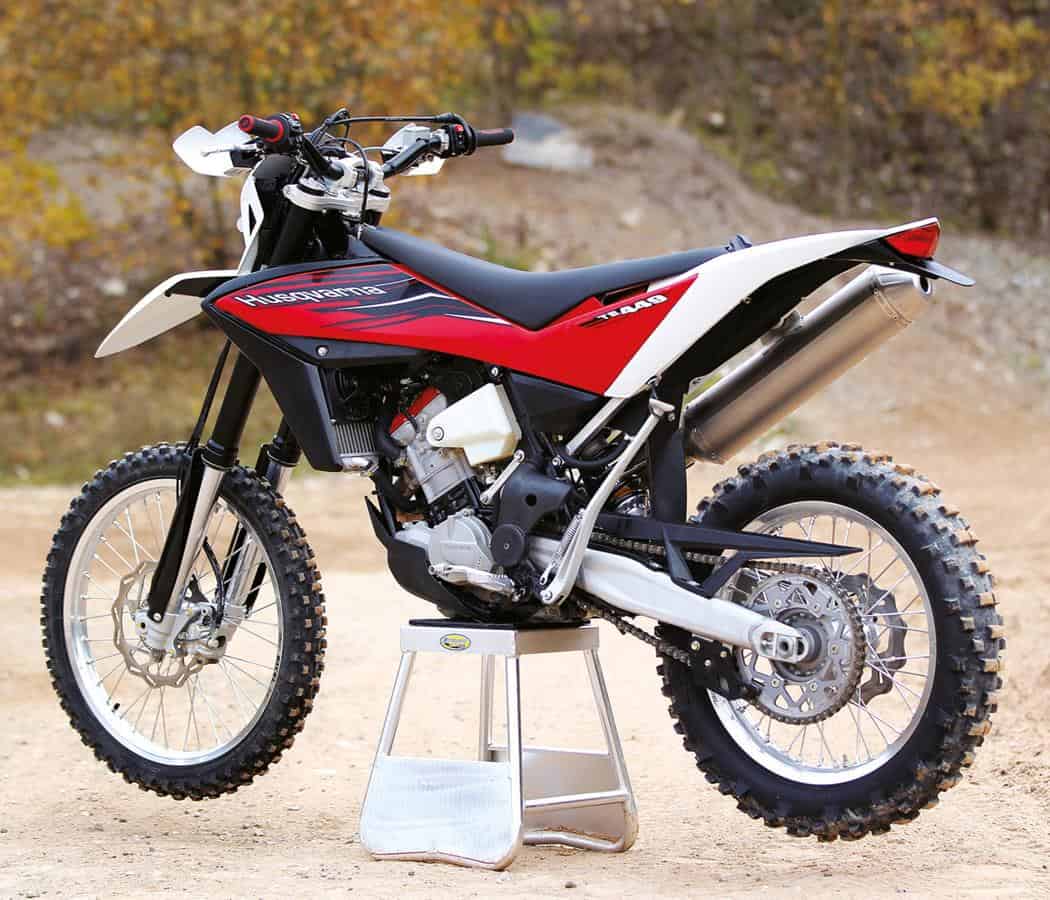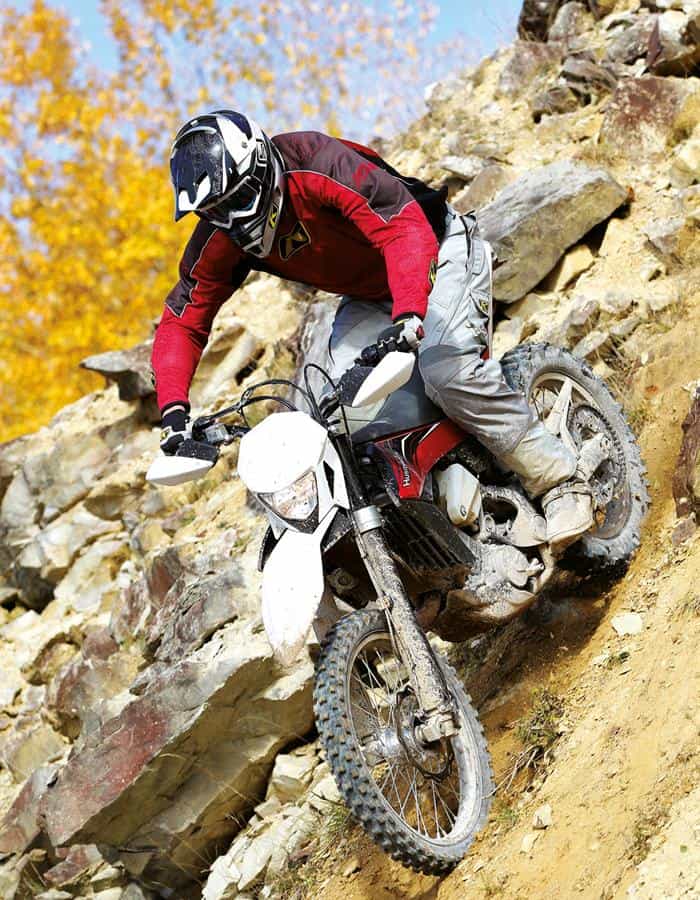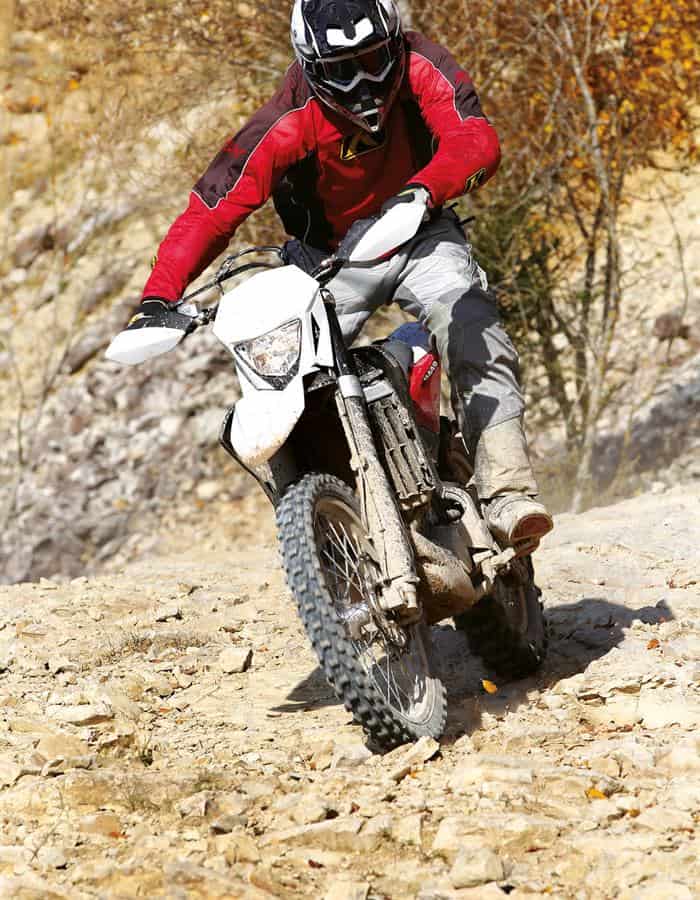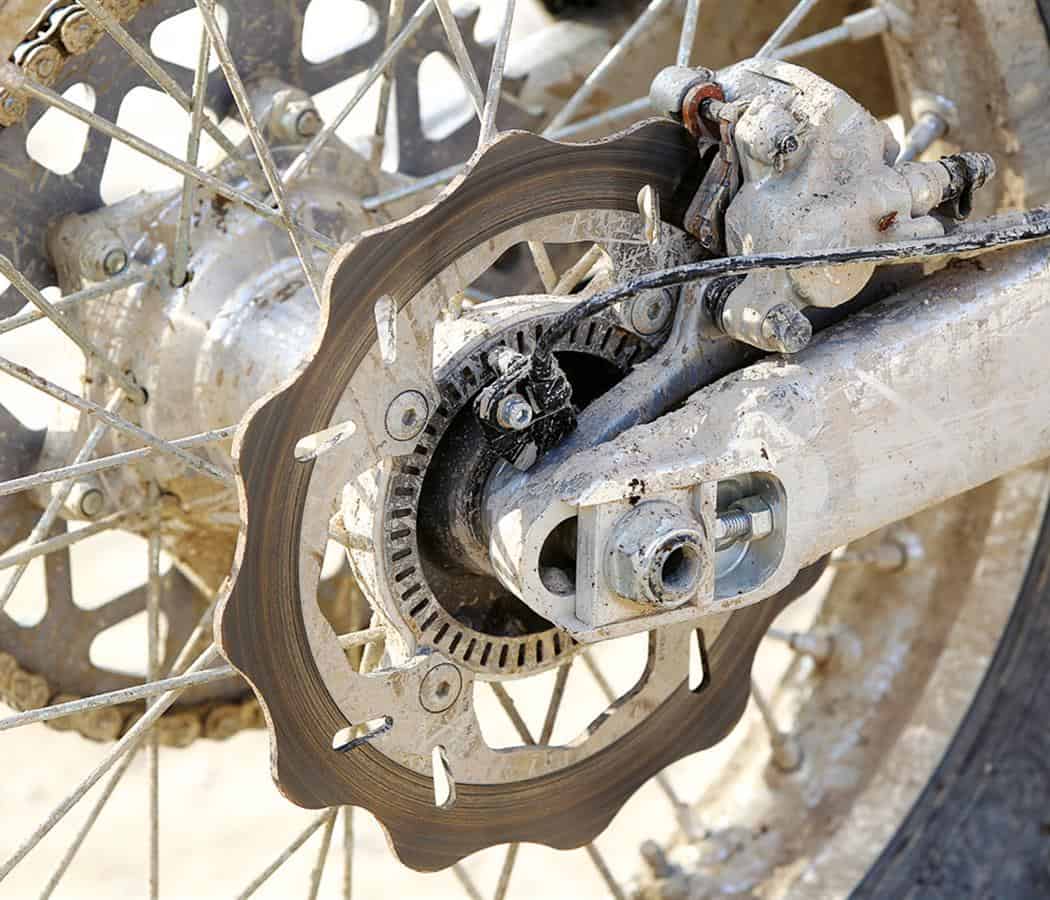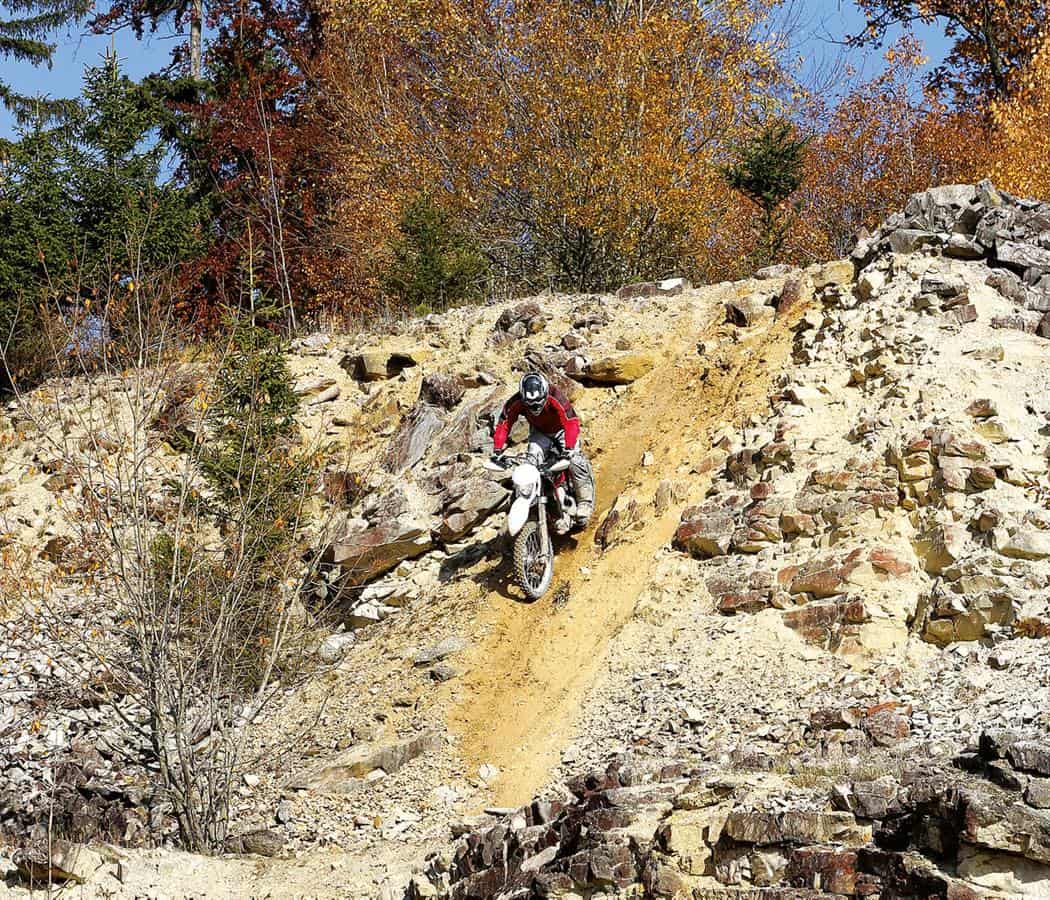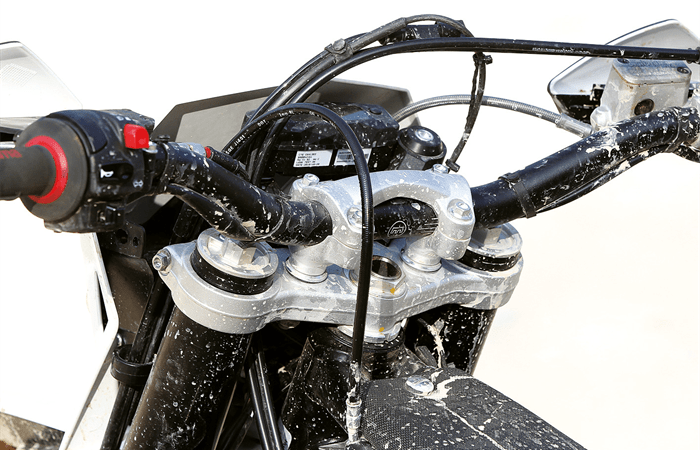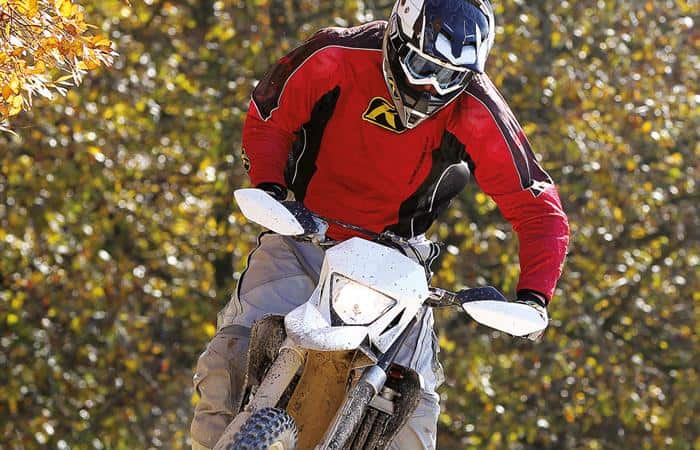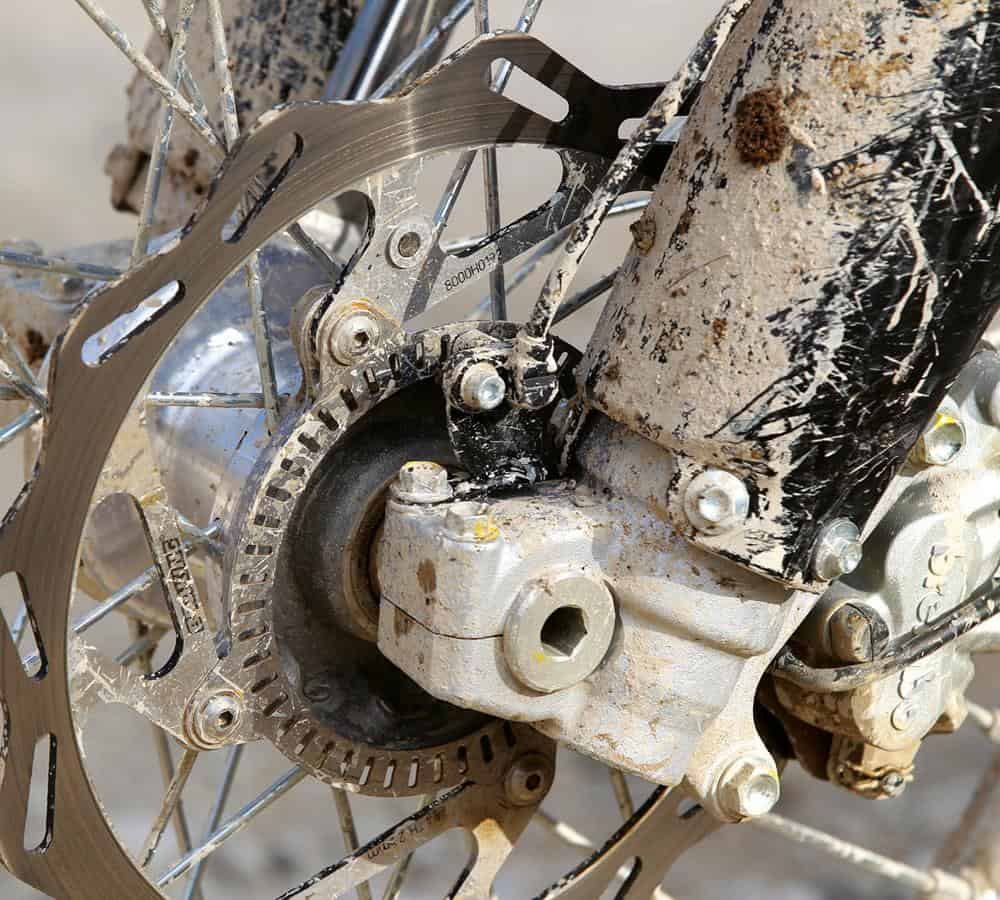Anti-lock brakes: a fantastic safety feature on tarmac and an absolute liability off-road. Well not any more, as BMW have developed Off-Road ABS. And they fitted it to Husqvarna TE449s for us to try…
‘Dagga dagga dagga…’ Not the sound of the bad guys in Team America but the noise most ABS systems make when tasked with slowing a bike off-road, constantly activating and deactivating the brakes.
That sound is burned into my memory having once tried to navigate a steep, mud and grass hill aboard one of the first R1150GS Adventures. Having initially switched off the ABS, unbeknown to me it had since reset itself and instead of executing a neat about-turn in the field entrance at the bottom of the descent, I ploughed headlong into a five-bar gate with only the heals of my boots slowing my progress..!
I’ll admit that was a long time ago, and there’s no doubt that anti-lock brakes have come a long way in recent years. Yet in recent times – namely traversing the Pyrenees on a Transalp and riding at Erzberg on a 1200GS Adventure – we’ve still found ABS to be somewhat unpredictable on the dirt. So for straying away from the tarmac, the safest way to stay in control is often to switch off the anti-lock… if you can.
BMW have other ideas. ‘Why should ABS be reserved for on-road bikes?’ came the rhetorical question when they unveiled the first ever anti-lock system designed for dirt use. ‘It’s the next logical step for off-road riding safety’. Really? Well that’s what they wanted to demonstrate by letting us loose around their Bavarian off-road training ground on Husqvarna TE449s kitted-out with a prototype system.
Data Input
Sceptical? Yeah, me too. Incredibly so, in fact. Being able to grab a handful of front brake, safe in the knowledge that you’ll rapidly slow down and remain in control, would be nice but I figured that there would simply be too many variables on the dirt for a system to cope with. I was also concerned that ABS on the rear would bring an end to sliding the bike into turns and ultimately hamper the way people ride dirtbikes. I needn’t have worried on that score, as the rear brake on the 449s remained a regular non-ABS set-up. Though it did play a part in the system…
Both front and rear hubs featured the familiar drilled ‘sensor rings’, which allow the ABS to monitor wheel speed. This is an intrinsic part of the system, as it’s the difference between the two wheel speeds which determines whether the ABS activates or not.
Every millisecond data is fed from the sensor on the front wheel, verified by that coming from the rear wheel, and accumulated by the system’s processor. Every ten milliseconds it works out whether it should be giving you the braking power you asked for, or whether by doing so you’ll end up on your head…
As you might imagine, knobbly tyres and the potentially huge variations in off-road terrain caused some serious problems for the development team. ‘Ideally it should have different modes for sensitivity’, claimed Ulrich Dumm, head of chassis control systems. And indeed that’s something we may see in the future, though given the complexities of such a feature I’d think it unlikely to make production for a while. There was, however, talk of an option to run ABS on the rear for when riding on the road (between trails), with the ability to switch it off when you reach the dirt. A nice touch.
Sadly, technical details were somewhat lacking and whilst we were told about the usual ABS ECU, the four ABS valves, and the modulator unit which regulates the braking pressure, tech heads were left wanting – perhaps because deals have yet to be ironed out with the various parts suppliers. The bikes’ seats were fastened with bolts rather than the usual Dzus fasteners to keep us from peeking at too much…
Rolling On
Our test venue, the Hechlingen Enduro Park, was where most of the development work for the ABS took place, and it offered a range of surfaces and obstacles. At its heart is a disused quarry, its hardpacked surface littered with stones and most of its walls transitioned into slopes of varying severity. Within its confines are also a pit of sand, beds of rocks, and numerous other man-made obstacles. Around the perimeter lay numerous trails, mainly narrow woodland singletrack, and wider faster access roads. I’d have liked to try the system on wet grass – a la Welsh special test – but sadly there wasn’t any!
Other than a small red light where the ignition barrel used to live and a hydraulic hose curving upwards from the front of the seat in a very ‘prototype-esque’ manner, from the cockpit there was little to give away the ABS. Even ridden back to back with a stock TE you’d be hard pressed to notice the 1.5kg weight penalty the system brings.
Testing the brakes as I pulled away, the 449 stopped without fuss. But the ground was firm and grippy, and I’d expect most modern ABS systems to be able to cope with that. So I snicked third, pointed the bike towards a patch of stones and accelerate hard. As soon as the front tyre hit the loose stuff I gave the front brake lever a good hard squeeze. The wheel locked momentarily, the brake released just a little and then reapplied itself as the bike rapidly slowed. It felt controlled, if a little off and on, though CONSIDERABLY better than any other system I’ve tried on the dirt.
A patch of stodgy mud was the system’s next test. And the exact same scenario played out. The front wheel skidded for a fraction of a second, then gripped, then shuddered to a halt. No fuss. I tried the same thing on a non-ABS bike and, as you might expect, it took a little more thought and mental processing to haul the bike up. It did stop quicker though…
The short lap that was set out took us up and down the quarry sides – U-turn then descend, U-turn then climb. The slopes were reasonably steep, though not so much that you couldn’t bring the ABS bike to a stop part way down, with just a gentle slide from the front wheel as the speed dropped to a crawl. Below 3km/h the ABS doesn’t work. ‘It’s too hard for the system to detect slip’, claimed the BMW boffins.
In a few places the descents were so steep that you had to hold the brake on all of the way down. And these were still within the anti-lock’s capabilities. Just. There was a slight feeling that the bike would start to run away if you tried to feel for front-end grip rather than putting all your faith in the ABS by squeezing the lever for all its worth, and with no run-off at the bottom of a couple of hills it took some doing to leave the rear brake alone and test just the front brake. Loose stones piled up at the bottom of one particularly steep descent could have posed a problem and it was good to feel the front brake working as the wheel ploughed through them. With a small amount of lean angle, the front could easily have slid or washed-out altogether. Thankfully it didn’t.
What you couldn’t get away with is snatching at the front lever whilst the bike was cranked into a turn. A momentary locking of the front wheel was enough to upset the bike’s balance, and whilst I didn’t end up on my ear it showed that isolating front braking and turning was far smoother than asking the technology to bypass the laws of physics.
Although the system reads the rear wheel speed as well as the front, BMW ensured that it would still allow you to brake with the front AND slide the rear. For faster turns, where you might want to drift the rear rather than locking-it-up, the system worked equally well.
Lever feel is a big deal wherever you ride, but especially so off-road. And this is an area where the Off-Road ABS is currently lacking. We’d been warned that as the system activated we’d feel it pulsing through the lever, and indeed this is just what happened. If you put your faith in the ABS and simply squeezed the lever as hard as possible, then the sensation was strange but not a problem. If you then tried to regulate the pressure so that the ABS WASN’T cutting-in then a problem arose. Once the anti-lock was working the pulsing lever made it all but impossible to deactivate it AND maintain braking.
Slip and Slide
Slick mud and slippery roots, terrain where most ABS systems would find themselves hideously out of their depth, weren’t an issue for the Off-Road system – it slowed the bike with minimal fuss. However, the out-and-out stopping power wasn’t on a par with a standard braking set-up.
The stock bike allowed you to brake hard, compress the forks and get the front tyre biting into the ground. The way in which the ABS constantly adjusted its braking pressure meant that the forks didn’t load-up the front tyre so readily and the knobbles weren’t allowed to really sink their teeth into the Bavarian dirt. The bike still slowed, just not as quickly and, for someone not used to the system, as predictably either.
And what riding you’re used to is crucial as to how you’ll get on with the system. BMW readily admit that this isn’t designed for competition use, and I suspect that most people who’ve built up some off-road experience will find that it simply doesn’t have the required performance… yet. For road riders and novices unused to the front wheel locking, and having to deal with the gamut of information and sensations that riding off-road constantly generates, it would allow them to concentrate on other issues. For those riders it’s fantastic.
At what point they’d feel they could do without it, or indeed whether they’d ever need to, is another point entirely. When you’re used to having a technological safety net, how do you decide to give it up and relearn an aspect of riding..?
Upping the Anti
When will we see the Off-Road ABS in production? BMW wouldn’t say, largely because the hardware suppliers haven’t been finalised. Which bikes will it be available on? Again, they were keeping tight lipped. However, the GS models are obvious candidates, and Ulrich Dumm led us to believe that it was ‘likely’ to feature on the Gelande Strasse machines in the not-too-distant future. Pressed further, all he was prepared to say was ‘I think you’ll see something like this [on the bikes].’ His barely controlled smirk spoke volumes…
There’s no doubt that the Off-Road ABS is a huge step in braking technology, and addresses one of the biggest problems when fitting ABS to big trailies. Unless the ‘Eurocrats’ have their way and demand that ABS is fitted to all motorcycles (in which case, BMW will at least be ahead of the game) I really can’t see it making inroads into the enduro sector any time soon. The only benefit it holds for seasoned enduro or trail riders is that it brings an added level of safety to riding on the road with knobbly tyres!
It’s on trailies and adventure sports machines where Off-Road ABS will be most welcome, because it really does work on the dirt. And in mud. And on wet rocks. And… Well, as almost all ABS systems (annoyingly) reactivate when you reset the ignition regardless of whether you’ve previously switched them off, it’s nice to know that the Off-Road system won’t see you inadvertently plunging over the edge of a fireroad to a ‘dagga, dagga, dagga’ soundtrack… or haplessly running into farmers’ gates!
BMW Off-Road ABS: a very brief history.
It’s 23 years since the first ABS-equipped BMW rolled off the production line, and since then the Bavarian Motor Works have produced some 1.2 million bikes equipped with anti-lock brakes. On those early bikes choosing the ABS system added a hefty 14 kilos to the bikes’ weight, and that figure has steadily reduced over the years to almost a tenth of what it was.
The concept of Off-Road ABS was first considered in 2004, with work starting on the project in 2006. 2007 saw the first system built – the same year that the company acquired Husqvarna. The system was trialled on the Italian-built off-roaders, though it’s a purely BMW project.

